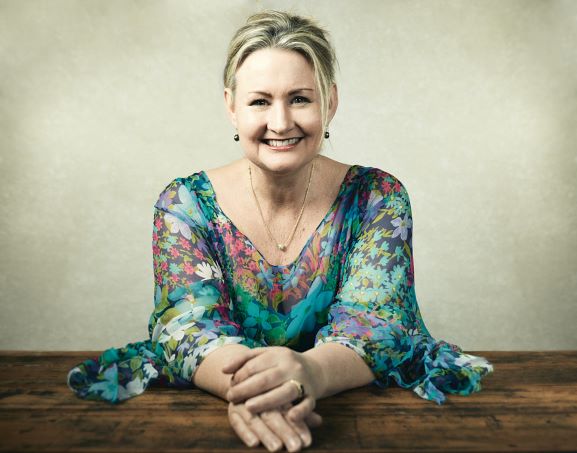When life’s hardships weigh heavily on our minds, finding a way to heal and move forward is crucial.
One modality that has been gaining popularity lately is Eye Movement Desensitization and Reprocessing (EMDR) therapy.
In this article, we’ll explore EMDR therapy in simple terms, share real-life stories to show how it can help regular people overcome various challenges, delve into its applications, and outline its history and the science behind it.
What is EMDR Therapy?
EMDR therapy can be thought of similar to a guide that helps us deal with difficult memories and feelings. Imagine it as a process divided into steps:
1. Talking and Planning: You and your therapist chat about your past and what’s troubling you. Together, you decide which memories to work on.
2. Getting Ready: Your therapist teaches you ways to manage stress and keep calm during therapy.
3. Memory Time: You think about a tough memory while your therapist helps you focus on it. You might follow their hand moving back and forth, or you could listen to sounds that go from one ear to the other.
4. Processing Feelings: This is when the magic happens. You’ll explore your feelings and thoughts linked to that memory. It’s like sorting through a messy closet and organizing everything.
5. New Thoughts: You learn to replace old, negative thoughts with new, positive ones. It’s like switching a dim light for a bright one.
6. Feeling Better: After the session, you should feel more relaxed and lighter, like you’ve put down a heavy backpack.
7. Checking In: You and your therapist keep an eye on your progress and make sure you’re doing better.
Real-Life Stories: How EMDR Can Help
Let’s look at some everyday situations where EMDR therapy has made a real difference:
1. Overcoming a Car Accident Trauma:
- Samantha’s Story: Samantha had a traumatising car accident that left her feeling anxious every time she sat in a car. EMDR therapy helped her process the frightening memory and regain her confidence on the road.
2. Conquering a Fear of Heights:
- David’s Story: David had a fear of heights that made him avoid tall buildings and bridges. With EMDR therapy, he faced his fear step by step, letting go of the anxiety that had held him back for years.
3. Finding Hope After a Tough Loss:
- Emma’s Story: Emma lost her beloved pet, and the grief was overwhelming. EMDR therapy helped her cope with the sadness and remember the happy moments she shared with her furry friend.
4. Easing Social Anxiety:
- Michael’s Story: Michael always felt anxious in social situations. He tried EMDR therapy to explore why he felt this way and develop new, more positive thoughts. Gradually, he started feeling more at ease in social gatherings.
5. Healing from a Painful Divorce:
- Lisa’s Story: Going through a divorce was one of the hardest things Lisa had ever faced. EMDR therapy gave her the tools to process the emotional pain, allowing her to move forward and build a new life.
Whether it’s a traumatic memory, a deep fear, or overwhelming sadness, EMDR therapy can be a tool to help regular people like Samantha, David, Emma, Michael, and Lisa find hope, face their fears, and move forward in life.
A Look into EMDR’s Past
When it comes to innovative therapies, Eye Movement Desensitization and Reprocessing (EMDR) stands out as a transformative approach that has helped countless individuals. But how did EMDR come into existence, and what is the history behind this therapeutic technique?
The Serendipitous Discovery
EMDR’s journey began in the late 1980s when Dr. Francine Shapiro, a psychologist, took a leisurely stroll in a park. As she walked, she noticed something remarkable. Her distressing thoughts seemed to ease as her eyes moved naturally from side to side while observing her surroundings. Intrigued by this phenomenon, Dr. Shapiro, with her background in psychology started to investigate further.
The Birth of EMDR
Dr. Francine Shapiro’s observations in the park led to the development of Eye Movement Desensitization and Reprocessing. In 1987, she introduced this novel therapeutic approach to the world by publishing an article in the Journal of Traumatic Stress. This article marked the inception of EMDR as a legitimate psychotherapeutic method.
The Eight-Phase Protocol
One of the defining features of EMDR is its structured eight-phase protocol. Dr. Shapiro outlined these phases to guide therapists and clients through the EMDR process. These phases are:
- History-Taking and Treatment Planning: This initial phase involves gathering information about the client’s history and identifying target issues to address in therapy.
- Preparation: Clients learn techniques to manage distress and anxiety while building trust with their therapist.
- Assessment: The therapist helps clients identify specific memories to target in EMDR sessions.
- Desensitization: This is the heart of EMDR therapy. Clients focus on a distressing memory while engaging in bilateral stimulation, such as following the therapist’s finger movements. This helps desensitize the memory’s emotional charge.
- Installation: Positive beliefs and emotions are installed to replace negative ones associated with the targeted memory.
- Body Scan: Clients learn to notice and alleviate any remaining physical tension or discomfort associated with the memory.
- Closure: The therapist ensures clients are emotionally stable before ending the session.
- Reevaluation: Clients and therapists assess progress and determine if additional sessions are needed.
EMDR’s Acceptance and Evolution
EMDR therapy was initially met with skepticism from some in the psychological community. However, over the years, a growing body of research and numerous success stories from clients and therapists alike have demonstrated its effectiveness. EMDR has gained recognition and acceptance as a valuable tool in the treatment of trauma and related disorders.
Applications Beyond Trauma
While EMDR’s origins lie in trauma therapy, its applications have expanded to address a wide range of psychological and emotional issues. Today, EMDR is used to treat not only Post-Traumatic Stress Disorder (PTSD) but also anxiety disorders, phobias, depression, grief, and even performance-related challenges.
The Science Behind EMDR Therapy
Understanding the science behind EMDR therapy can shed light on why it works so well.
When we experience a traumatic event, the memory of that event gets stored differently in our brain, often leading to overwhelming emotions when we recall it. EMDR therapy helps rewire these memories and emotions.
1. Bilateral Stimulation: The back-and-forth eye movements or other forms of bilateral stimulation used in EMDR therapy mimic what happens during our natural Rapid Eye Movement (REM) sleep phase. During REM sleep, our brain processes and stores information. EMDR therapy essentially taps into this natural process, allowing us to process traumatic memories more effectively.
2. Memory Reconsolidation: EMDR therapy also taps into a process called memory reconsolidation. When you recall a memory during therapy, your brain becomes more flexible, allowing you to update and reorganize the memory with new, healthier thoughts and emotions. This is why EMDR therapy can help you replace negative beliefs with positive ones.
3. The Mind-Body Connection: EMDR therapy acknowledges the connection between our mind and body. Trauma often gets stored in our bodies as well as our minds, leading to physical symptoms like tension or pain. By addressing both the mental and physical aspects of trauma, EMDR therapy offers a more comprehensive healing approach.
EMDR therapy might sound complex, but it’s essentially designed to work as a companion guiding you through the shadows of challenging experiences towards a brighter future.
How to find an EMDR Therapist?
If you’re interested in trying EMDR therapy, it’s important to find a therapist who is specifically trained in EMDR methods.
We have Hart therapists who are trained and provide EMDR, so we’re happy to assist you finding one. Call us on 1300 830 552 or enquire here.












 to our moral awareness.
to our moral awareness.

